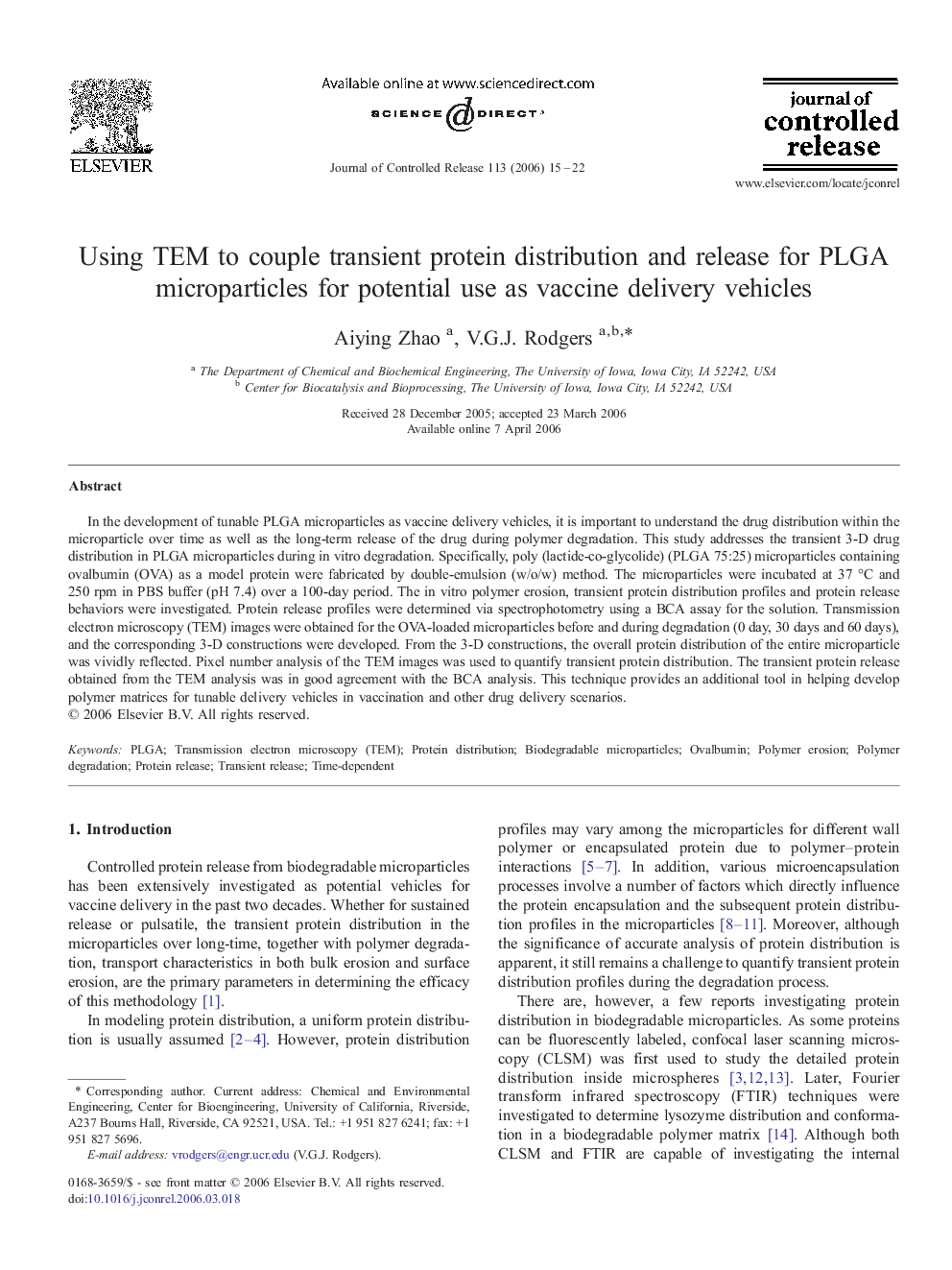| Article ID | Journal | Published Year | Pages | File Type |
|---|---|---|---|---|
| 1427709 | Journal of Controlled Release | 2006 | 8 Pages |
In the development of tunable PLGA microparticles as vaccine delivery vehicles, it is important to understand the drug distribution within the microparticle over time as well as the long-term release of the drug during polymer degradation. This study addresses the transient 3-D drug distribution in PLGA microparticles during in vitro degradation. Specifically, poly (lactide-co-glycolide) (PLGA 75:25) microparticles containing ovalbumin (OVA) as a model protein were fabricated by double-emulsion (w/o/w) method. The microparticles were incubated at 37 °C and 250 rpm in PBS buffer (pH 7.4) over a 100-day period. The in vitro polymer erosion, transient protein distribution profiles and protein release behaviors were investigated. Protein release profiles were determined via spectrophotometry using a BCA assay for the solution. Transmission electron microscopy (TEM) images were obtained for the OVA-loaded microparticles before and during degradation (0 day, 30 days and 60 days), and the corresponding 3-D constructions were developed. From the 3-D constructions, the overall protein distribution of the entire microparticle was vividly reflected. Pixel number analysis of the TEM images was used to quantify transient protein distribution. The transient protein release obtained from the TEM analysis was in good agreement with the BCA analysis. This technique provides an additional tool in helping develop polymer matrices for tunable delivery vehicles in vaccination and other drug delivery scenarios.
